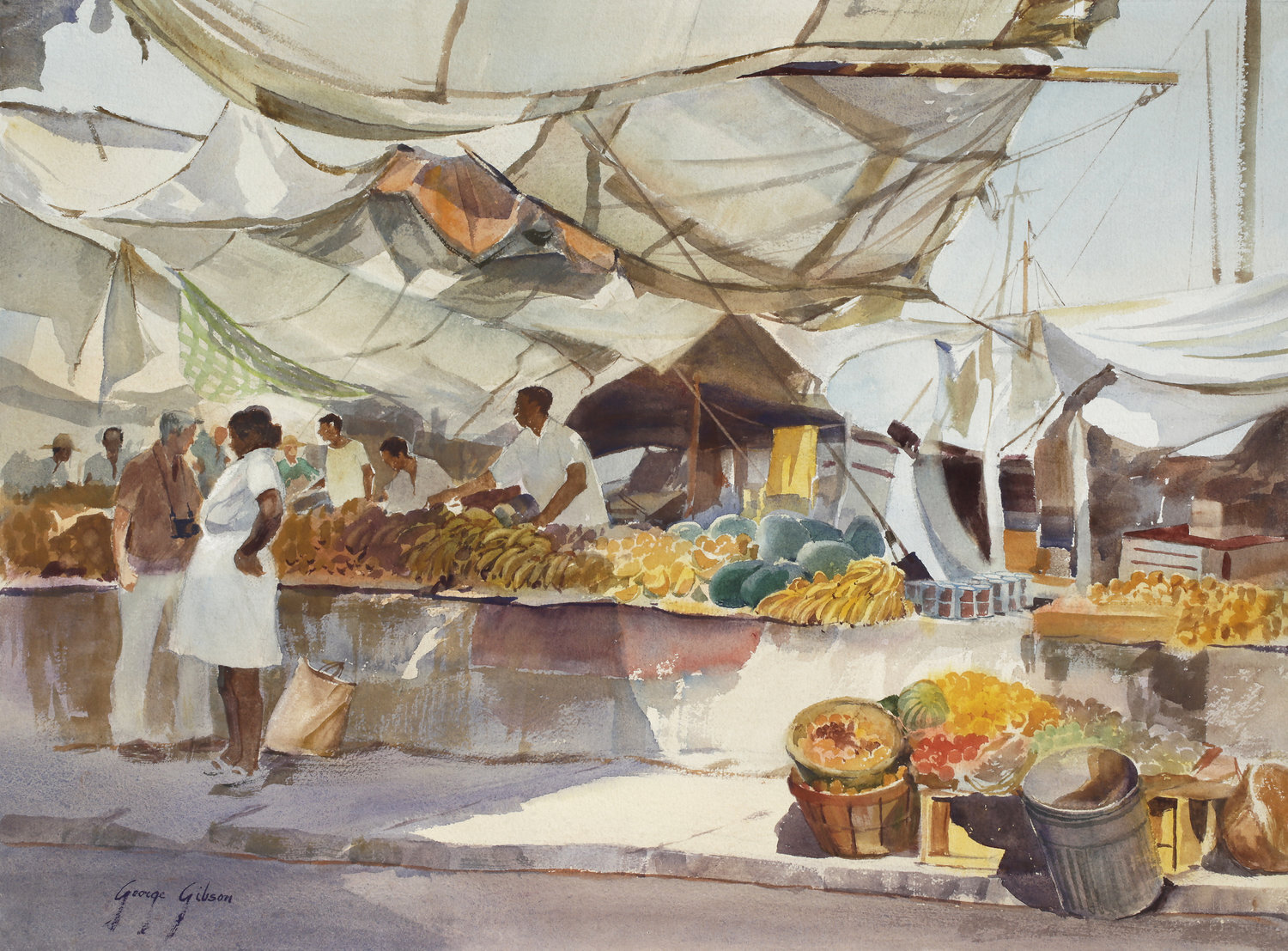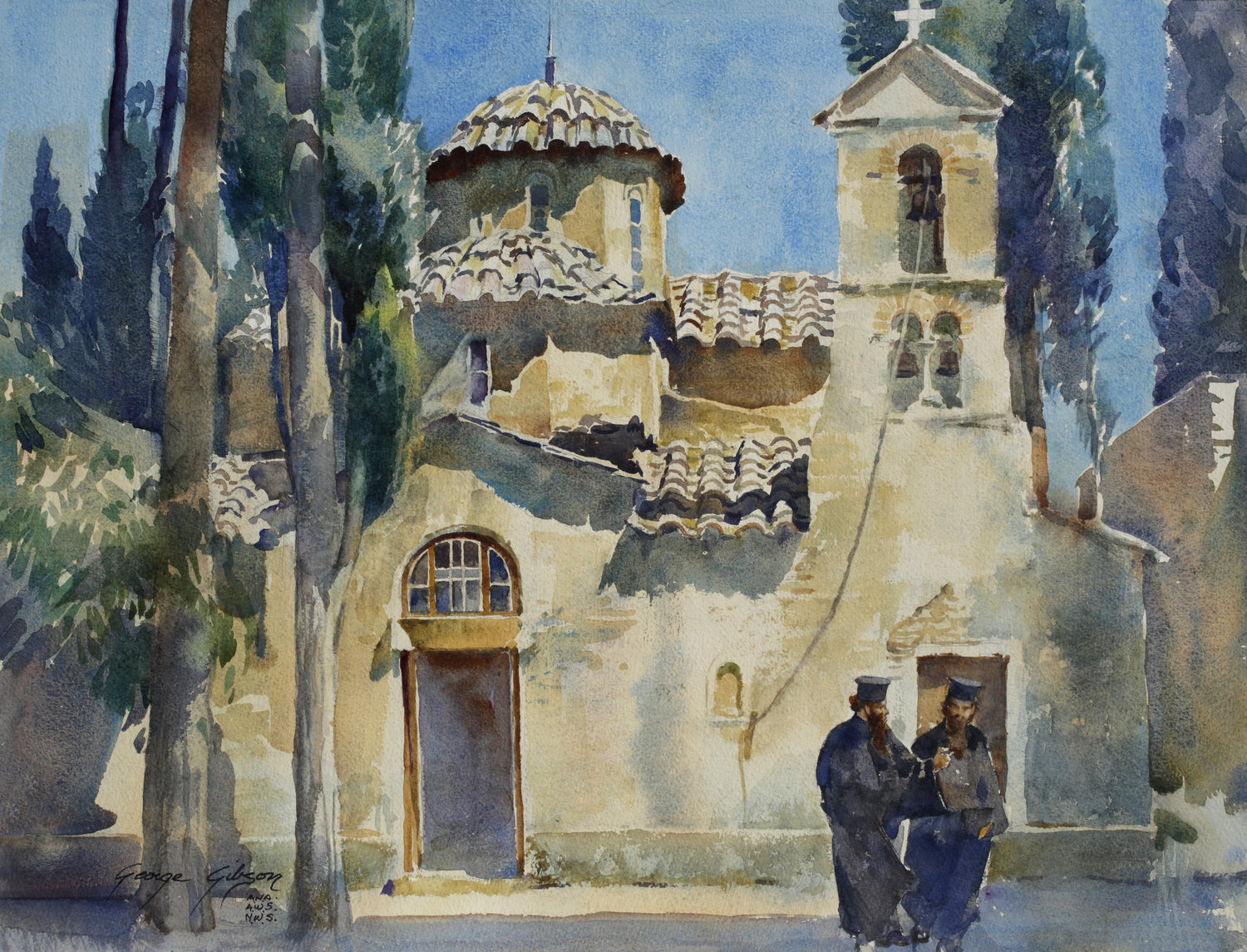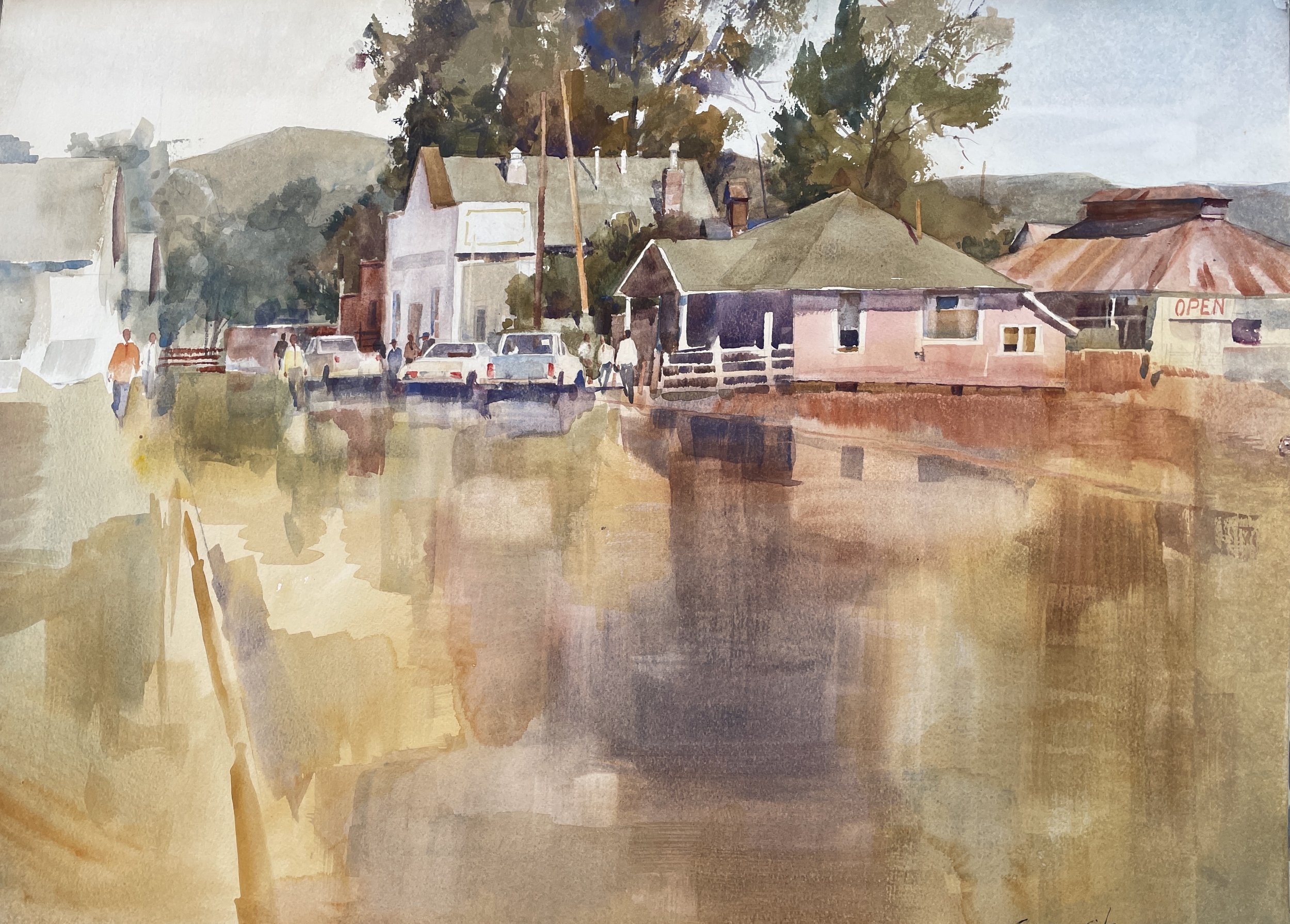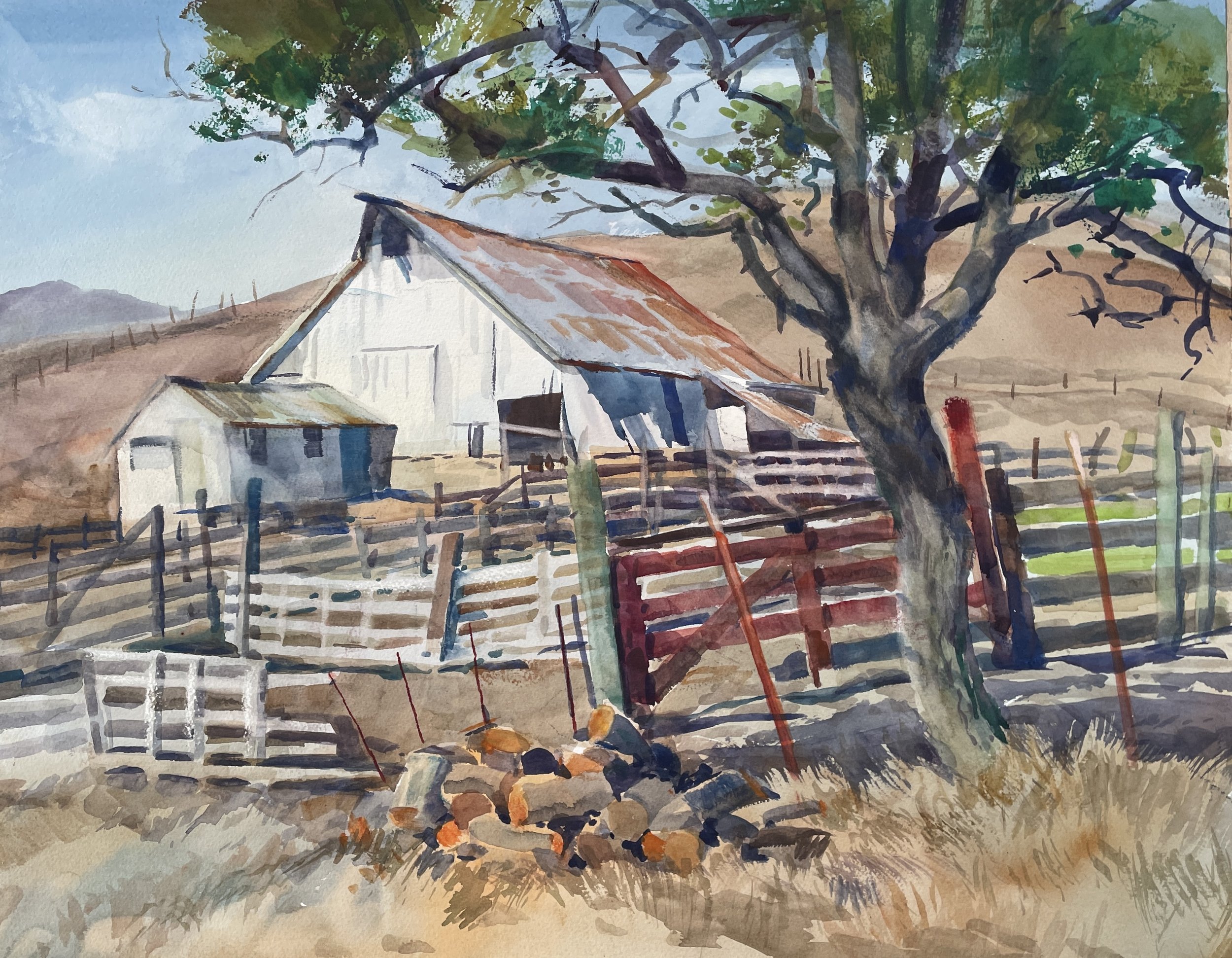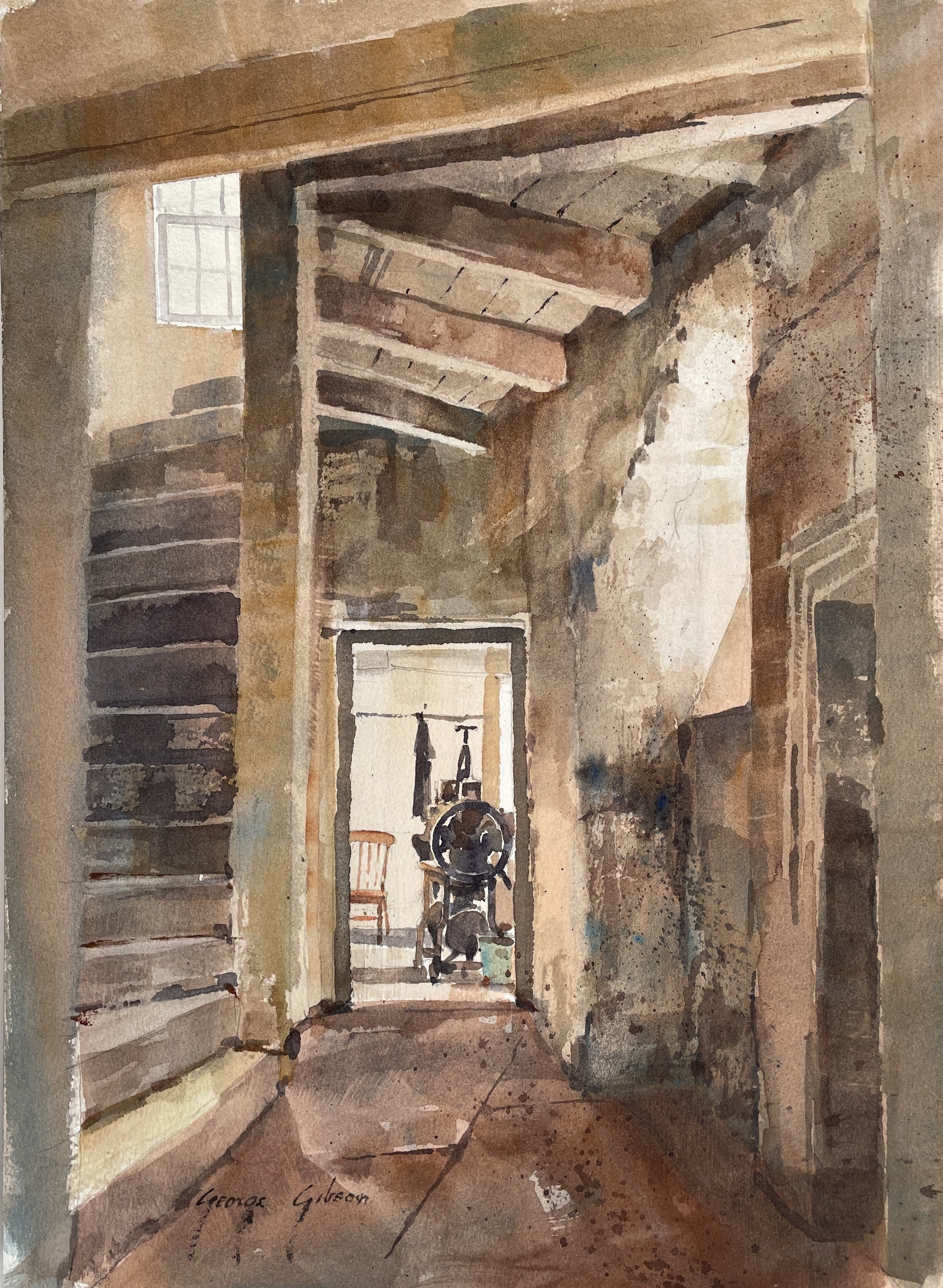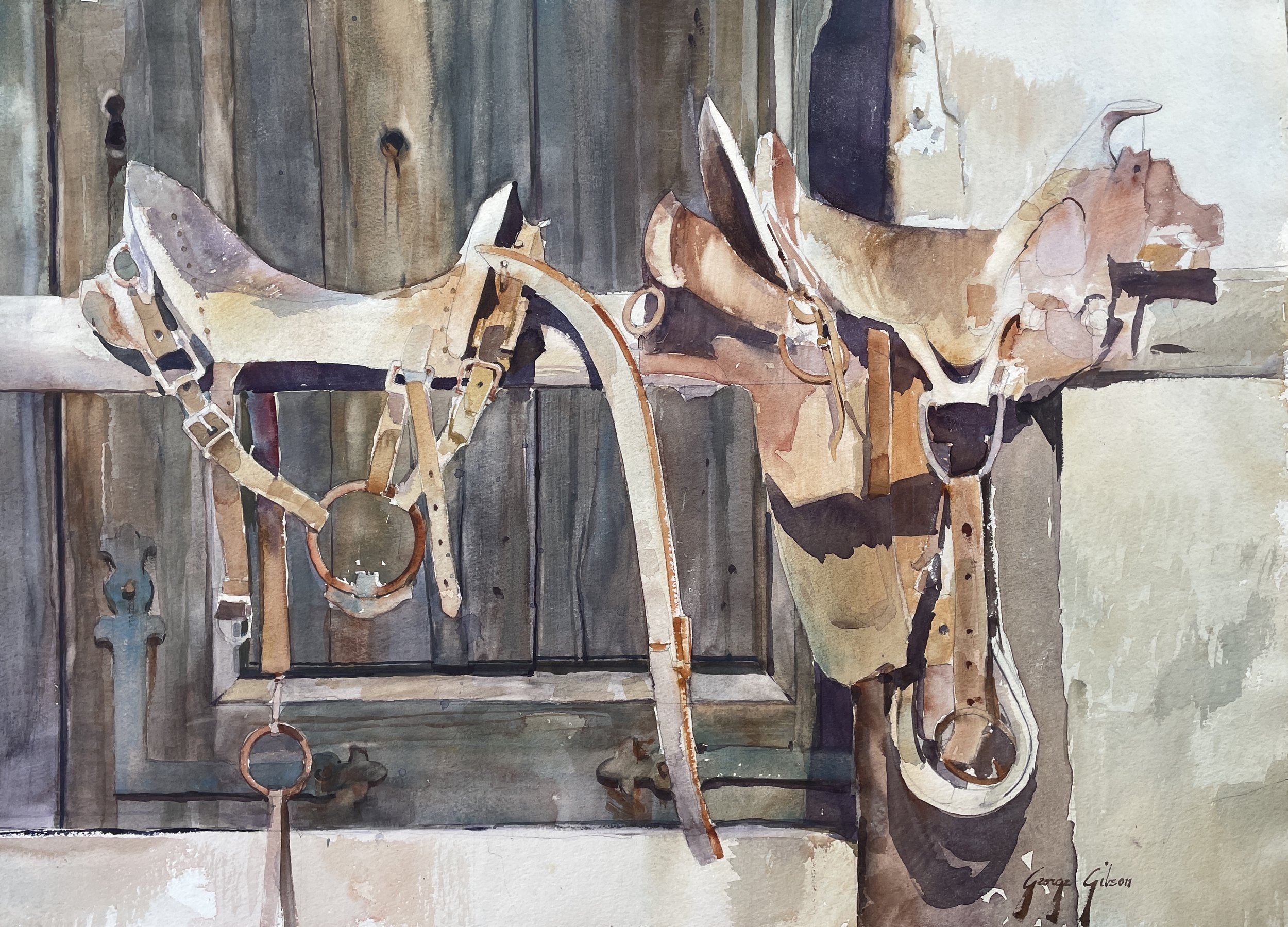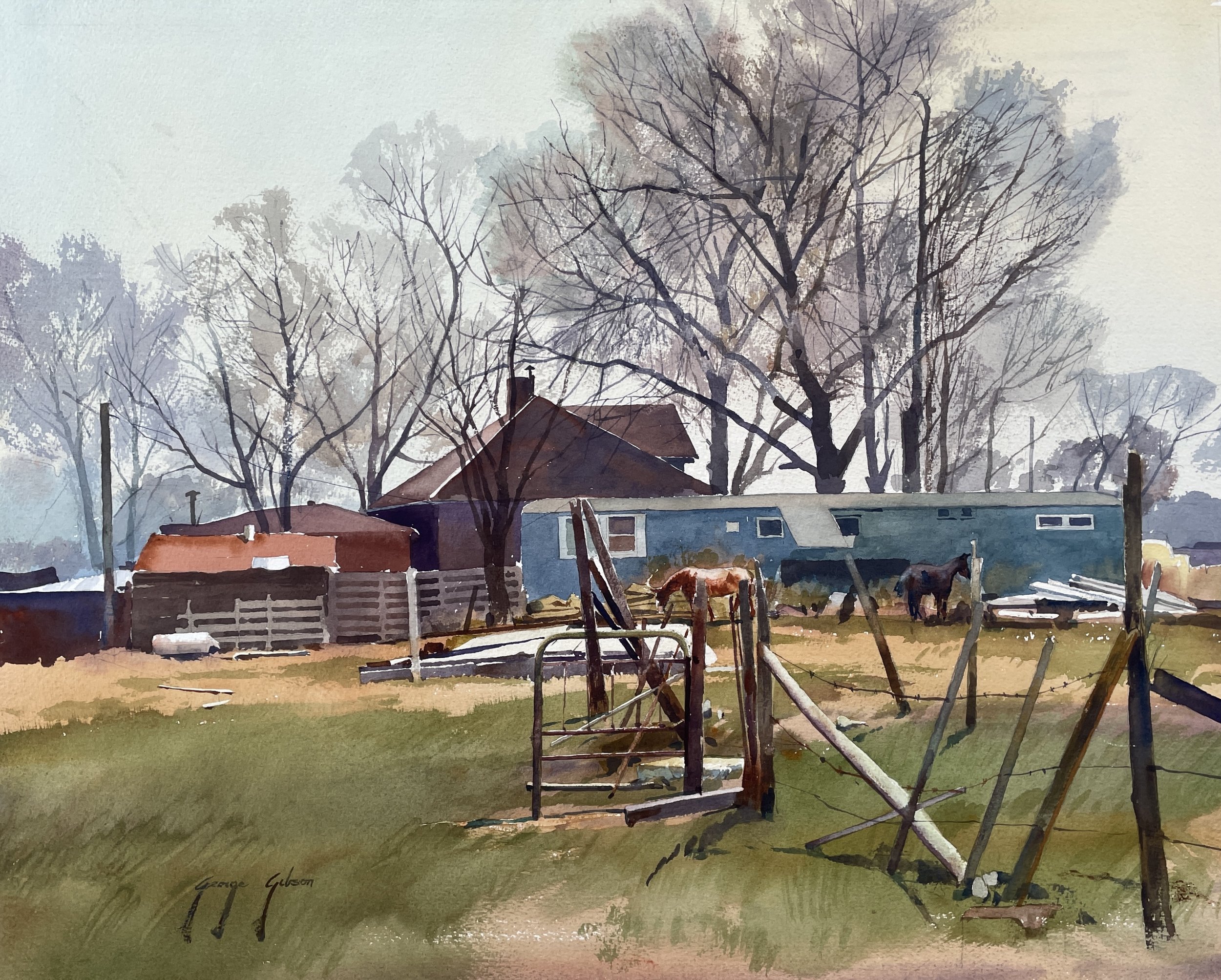George Gibson
George Gibson studied at the Glasgow School of Art, following a degree at the university in his native Edinburgh, Scotland. With a letter of introduction from a relative of his Glaswegian teacher, he set off for America to work in scenery painting.
Gibson would amass extensive credentials, becoming an associate of the National Academy in 1956. But it was almost four decades before he became a full academician, focusing his efforts instead on the avenue offered by the motion picture industry. He was recognized for his exceptional facility, making backdrops of extraordinary realism for extraordinary fantasies, from the Wizard of Oz to An American in Paris. Gibson saw the big picture: under his art direction, studios accommodated grander painted backdrops. Gibson helped to develop the system that would be tinkered with only slightly through the next five decades: a method for presenting photographic reality without photography, world-building in its rawest visual form.
His watercolors and oils unrelated to film share this sense of world-building, but on a more intimate scale. He painted both the vernacular life of rural California and exotic scenes of world travel, joining the realist watercolor tradition of Henry Roderick Newman, John Singer Sargent, and Edward Hopper.
George Gibson 1904-2001
October Snow, Fort Collins, Colorado
Signed at lower right with post-nominal initials: George Gibson / ANA AWS
Watercolor on paper
22 x 30 inches

